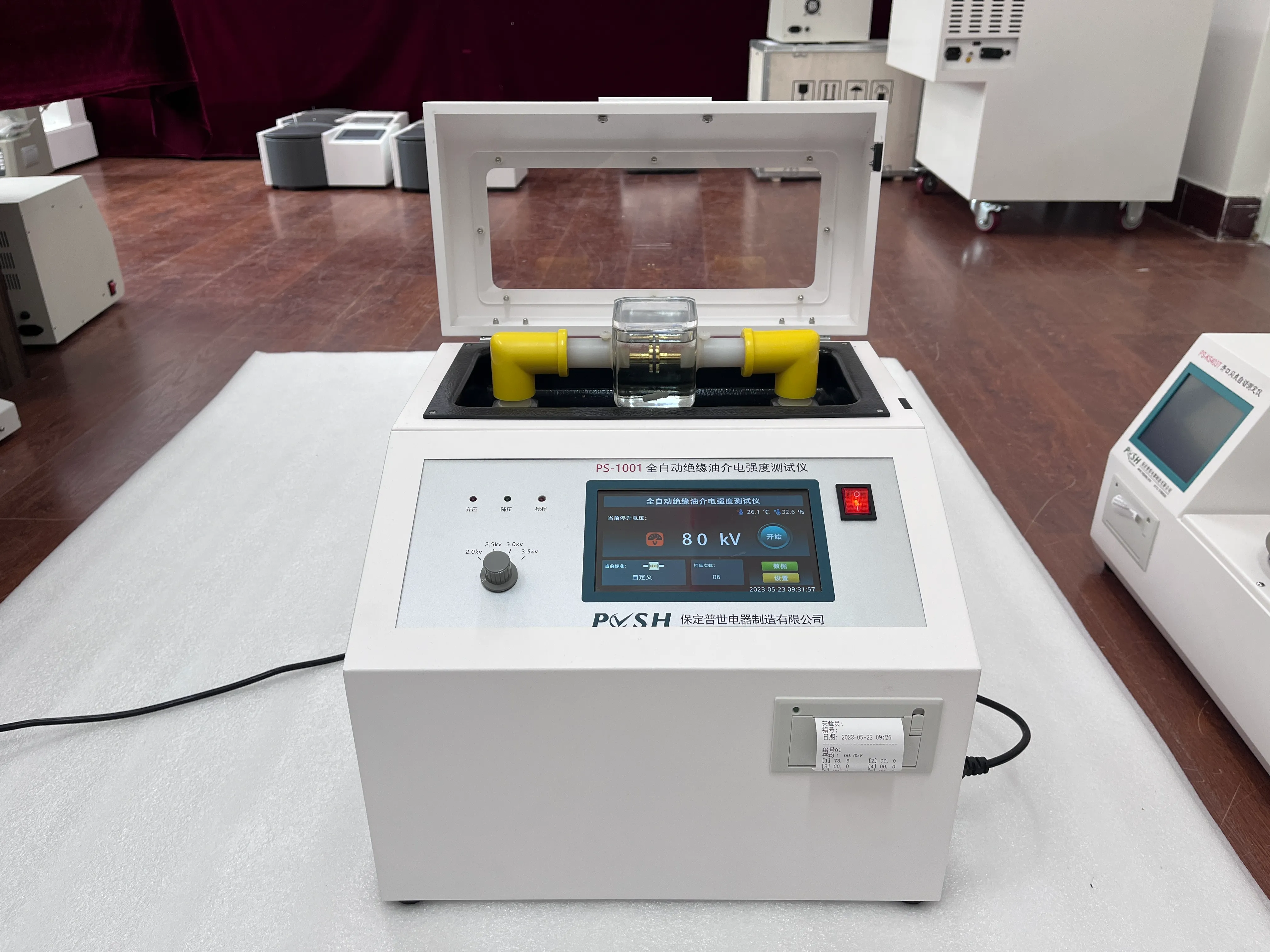 English
English


Comprehensive Analysis Tool for Oil Composition and Quality Assessment in Various Applications
Understanding Oil Breakdown Testers A Key Tool in Lubrication Analysis
In the realm of mechanical engineering and maintenance, the importance of lubrication cannot be overstated. Lubricants, particularly oils, play a critical role in reducing friction, preventing wear, and ensuring the smooth operation of machinery. However, over time, these oils can degrade due to various factors, including oxidation, thermal degradation, and contamination. To monitor the condition of lubricants, one of the most effective tools available is the oil breakdown tester.
An oil breakdown tester is an analytical instrument designed to assess the quality and performance of lubricating oils. It provides crucial data about the oil’s ability to withstand electrical stress without breaking down, which helps in predicting when the oil should be replaced to maintain optimal machine performance.
How Oil Breakdown Testing Works
The fundamental principle of oil breakdown testing is to determine the dielectric strength of the oil. This refers to the oil's ability to act as an insulator and resist the flow of electric current. In practical terms, this involves measuring the voltage at which the oil will fail and allow current to pass through, indicating a breakdown of the lubricant.
During the testing process, a sample of the oil is placed between two electrodes within the tester. The tester gradually increases the voltage until the oil breaks down, and an electrical current begins to flow. The voltage value at which this occurs is recorded as the breakdown voltage. A higher breakdown voltage indicates a better quality lubricant, capable of withstanding electrical stress, while a lower voltage suggests that the oil may have degraded and requires replacement.
Importance of Oil Breakdown Testing
oil breakdown tester

Oil breakdown testing is vital for several reasons
1. Preventive Maintenance Regular testing of lubricating oils can help predict potential failures in machinery due to oil degradation. This proactive approach allows maintenance teams to replace the oil before it leads to equipment failure, reducing downtime and repair costs.
2. Cost Efficiency By identifying the optimal time to replace lubricants, companies can avoid unnecessary oil changes and utilize oils for their full service life, leading to financial savings.
3. Performance Assurance Ensuring that machinery runs on high-quality lubricants is crucial for operational efficiency. Poor-quality oil can lead to increased friction, heat generation, and, ultimately, mechanical failure. Oil breakdown testers provide the data needed to guarantee that the oils in use are performing at their best.
4. Compliance and Reporting In many industries, maintaining high-quality lubricants is not just a best practice, but a regulatory requirement. Oil breakdown testing helps organizations maintain compliance with industry standards and can provide documentation to demonstrate adherence to quality protocols.
Conclusion
In summary, oil breakdown testers are an essential part of maintaining effective lubrication in machinery. Their ability to measure the dielectric strength of oil provides critical insights into oil quality, helping companies to implement effective preventive maintenance strategies. Utilizing oil breakdown testing not only ensures the longevity and reliability of equipment but also contributes to overall operational efficiency and cost savings. As industries increasingly prioritize maintenance strategies that enhance performance and minimize downtime, the role of oil breakdown testing will continue to grow in importance. Investing in such technology can lead to significant benefits, making it an indispensable tool for engineers and maintenance professionals alike.
-
Differences between open cup flash point tester and closed cup flash point testerNewsOct.31,2024
-
The Reliable Load Tap ChangerNewsOct.23,2024
-
The Essential Guide to Hipot TestersNewsOct.23,2024
-
The Digital Insulation TesterNewsOct.23,2024
-
The Best Earth Loop Impedance Tester for SaleNewsOct.23,2024
-
Tan Delta Tester--The Essential Tool for Electrical Insulation TestingNewsOct.23,2024





